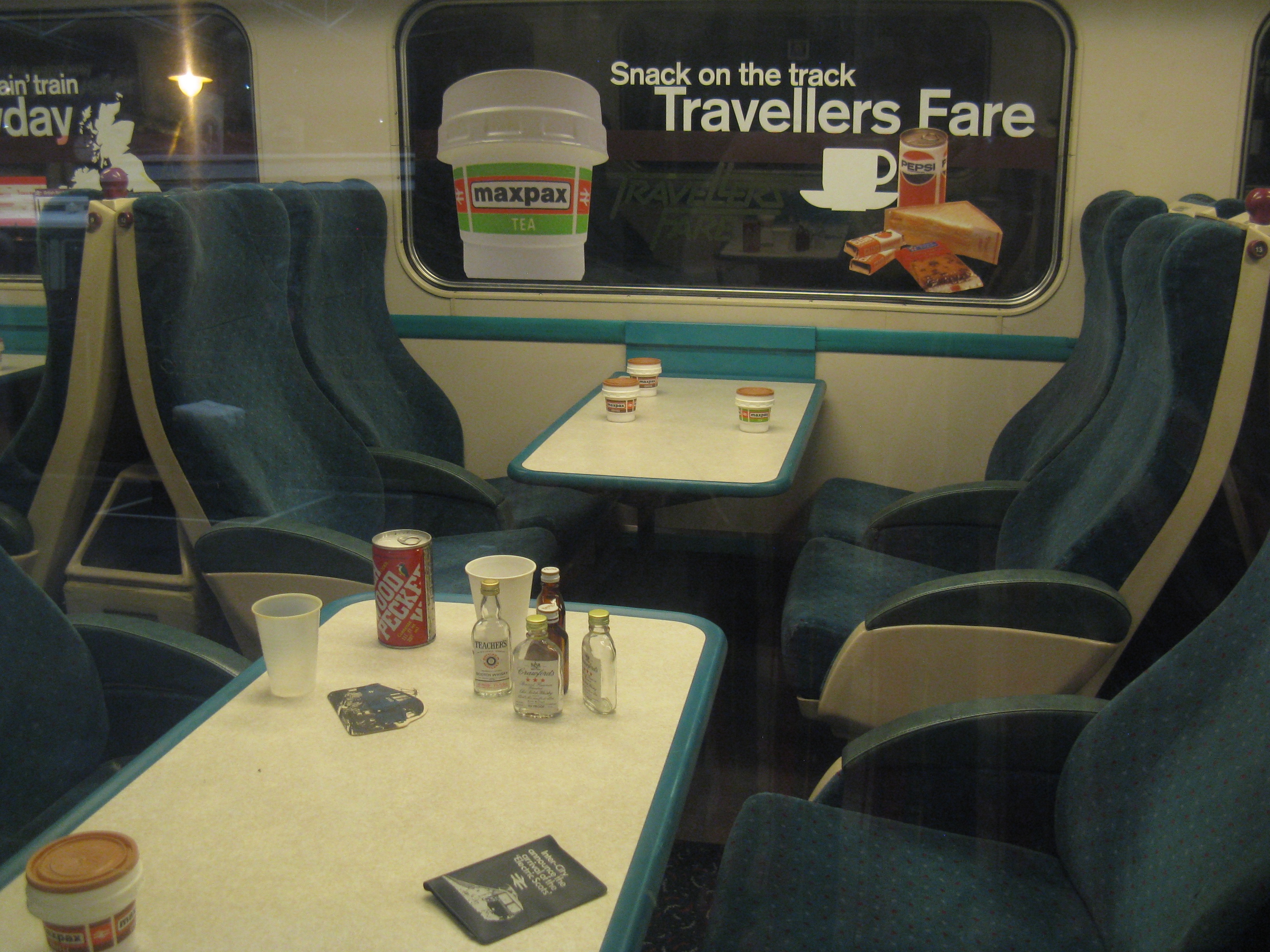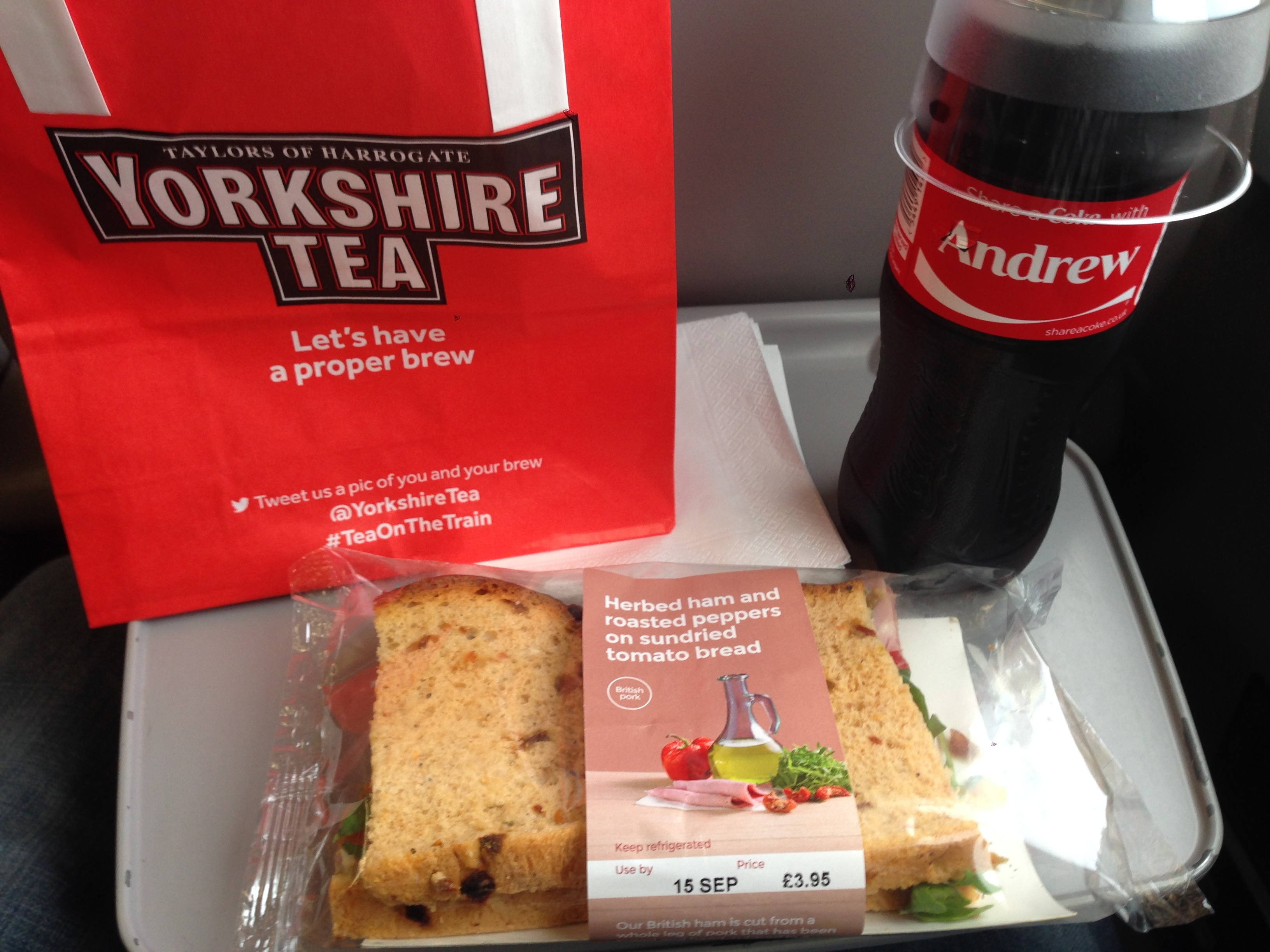caravanman
Engineer
Folk might enjoy a look back at the cleaning done in the old days, and a look at the coaches.

Indeed, those trains were very common when I worked for B.R. back in the early 1970's. We called them the "slam door" stock. Similar coaches had less doors, and the interior compartments were removed, but one could still lower windows and the doors "slammed" to close. One feature of the exterior door handles was that if a door was open, the handles stood verticaly, and closed they were horizontal. If not quite closed correctly, they stayed at 45 degrees, so station staff looked at them before giving the "right away" signal.Caravanman, that video has one of my all-time favorite coaches (I think) arriving on Platform 15 at the beginning. Each compartment has its own door to the platform which is very cool!




Hmmm, just like Amtrak of old, they served Pepsi products!When I was there in 2014, the National Railway Museum had a display of the interior of a 1970s British Railways snack car, complete with disposable cups.

Hmmm, just like Amtrak of old, they served Pepsi products!

I found the mirror cleaning method in the “**** and Span” video most interesting (and disturbing): using mouth breath to moisten the glass before wiping it down!!!Interesting how the US cleaners are using vaccum cleaners, and years later, that UK one above is still using mops and brushes...
I found the mirror cleaning method in the “**** and Span” video most interesting (and disturbing): using mouth breath to moisten the glass before wiping it down!!!
The snack car shown in the museum photo is from a HST type train, introduced in 1976. I notice an advert for "maxpax" hot drinks. These were dire in taste, some sort of powdered tea, truely awful !
Oops, I saw the rubbish bin between the seat backs, and assumed it was a HST coach.That‘s actually pre-HST. Mark 2f, by the look of it. The last development before the iconic HST. The window seals give it away. You’re right about Maxpax, though - truly awful.
Most "on train" snack type food offerings here in the UK are rather poor, and eye wateringly expensive. Better to buy a sandwich before you board the train!
Didn't the term "highwayman" originate in your county?It may be more worldwide than I think, but it seems that here in Britain, we are particularly prone to price hiking, or "gouging"! Motorway services, trains, stadiums, airports all suddenly become places where the price of rather poor food magicaly becomes double what one should expect to pay!
I asked my chums on a BR forum, and produced 25 replies! (Easy to get Brits talking about a cup of tea).
Although the conversation was wide ranging, covering divers topics such as owning a B.R. teapot, green colour china cups, etc, no one had much idea about the china cups ending up on the coach seats. The consensus was that tea in china cups was supposed to be consumed in the restaurant or buffet car, not taken to a coach seat. Folk think paper or poly cups were introduced in the mid 1970's...
The one notable exception I recall, was when they expanded the Pittsburgh airport into a major hub (for US Airways) years ago. The also made it into a shopping mall of sorts. When they did that, they got pledges from merchants and restaurants to only charge "street prices", and in that way attracted nearby residents to shop there. It was a real oasis from the usual gouging.
Since the hub closed, I don't know if that policy remained, or not. Haven't been there in decades.
Glad to hear that they are continuing the "street prices" policy. I had thought that the shopping mall was before security check in, so why would they need boarding passes? And if not, with the reduced need for gates, surely they could redesign and shrink the 'sterile' airside, to make it so...From a little research, it does appear that they still do have that policy in place (and Allegheny County, which oversees the airport, regularly reviews the pricing at shops and restaurants).
I passed through a few years ago when I was visiting Pittsburgh, and the airport seemed like a veritable ghost town compared to when I lived in Pittsburgh in the late 1990s -- one issue was US Airways gradually decreasing the amount of flights (a trend continuing under American), and the other issue was people not being able to get past security without a boarding pass since 9/11/2001.
In recent years, the airport had started allowing a limited number of people to sign up in advance to be able to go past security and shop at certain times of the day and week -- a program called MyPITPass -- but that program is currently suspended.
Glad to hear that they are continuing the "street prices" policy. I had thought that the shopping mall was before security check in, so why would they need boarding passes? And if not, with the reduced need for gates, surely they could redesign and shrink the 'sterile' airside, to make it so...
The Pittsburgh airport is basically two separate buildings, connected by an underground train: the main terminal, where ticketing, baggage claim, and the security checkpoint are, and then an X-shaped building where all the gates are. The shopping area is basically in the middle of the X.
Moving security so that the shopping is in an unsecured area would require serious renovations (and would result in having four separate security checkpoints, not just one).
Enter your email address to join: